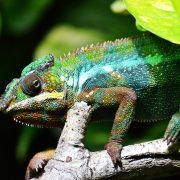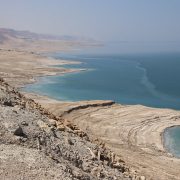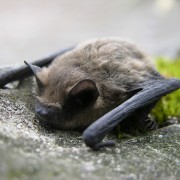A volcano is an opening on the surface of the earth or a planetary mass object which allows hot lava, volcanic ash and gases to escape from the magma chamber below the surface. The volcanoes are found in different parts of the world and there are different types of research reports that have been written about the volatility of the volcanoes. Sometimes the eruption of volcanoes causes massive damage and it can even kill the peoples living around or nearby the volcanoes. There are different types of research reports that have shown this fact that on earth; the volcanoes are generally found where the tectonic plates are diverging.
These research reports have also shown this fact that the erupting volcanoes can cause different types of problems, not only in the immediate vicinity of the eruption. There are facts on the record that volcanic ash also caused damage to aircraft, in particular those jet engines where ash particles can be melted by high operating temperature. Different types of research studies have also shown this fact that volcanic eruptions were thought to be a punishment from the Gods.
But now, with the advancement of technology, this thing has come to know that volcanic eruption are a result of glowing hot magma being forced from the mangle through vents in the crust of earth. We have selected this article in order to discuss some dangerous and active volcanoes around the world whose eruptions can cause massive damage.
1. Soufriere Hills, Montserrat
This is considered as one of the most dangerous and active volcano of the world as it has drastic lava in its midst. There are different types of research reports that have clearly shown this fact that this volcano behaved badly since 1995. At that time, the eruption from this hill destroyed the capital and rendered most of the island uninhabitable. This volcano has many lava domes which are normally formed in its summit and is found on the Caribbean island of the Montserrat. Different types of research studies have shown this fact that this volcano in andesitic in nature and the current pattern of the activity includes periods of dome growth, punctuated by the brief episodes of dome collapse.
The history of eruption of this volcano starts from July 1995, when huge mudflows began occurring regularly. The first explosion was recorded in the new period of activity in August 1995. This activity lasted for 18 weeks and it causes huge losses in the surrounding areas. This period lasted for 60 weeks and during this period, the victims witnessed severe earthquakes.
Another large eruption was noticed on 25 June 1997 and this eruption caused the death of more than twenty peoples in this area. Since then, this volcano has erupted many times and due to its volatility, the peoples of the area moved to different other safe places of the country.
2. Krakatoa, Indonesia
Krakatoa is a volcanic island which is situated in the Sunda Strait between the islands of Javaand Sumatra in Indonesia. This is also considered as one of the most dangerous and active volcano of the world. The eruption of 1883 by this mountain is one of the most infamous in history. Its explosion is judges to be the loudest sound ever heard. That eruption caused the deaths of more than 36,000 people at that time and it destroyed over two-third of the island. There are different types of research reports that have shown this fact that the explosion is considered to be the loudest sound ever heard in modern history, with reports of it being heard up to 4,800 km from its point of origin.
Different types of geological research reports have found this fact that the eruption of 1883 by this volcano was the most massive and that eruption was equivalent to 200 megatons of TNT which is nearly equal to 13,000 times the nuclear yield of the Little Boybomb that destroyed the Hiroshima during the World War II.
These research reports have also shown this fact that the eruption in 1883 ejected about 5.0 cu mi of rock and ash. That explosion was heard in Perth in Western Australia which is about 3,110 km to the south from this place. According to the official records, that eruption destroyed around 165 villages and towns and 132 villages were seriously damaged. There are different types of research reports that have also shown this fact that periodic eruptions continued since, with the recent eruptions in 2009, 2010 and 2012. These eruptions also caused many damages to the surrounding areas.
3. Yellowstone, Caldera, USA
This is also considered as one of the most dangerous and active volcano of the world. The Yellowstone Caldera, USA sounds pretty scary. There are different types of research reports that have shown this fact that it has only three super eruptions in the last two million years. Those massive explosions and eruptions forced the U.S Geological Survey to classify it as “high-threat” system.
As far as the details are concerned, the Yellowstone Caldera is the volcanic caldera which is located in Yellowstone Park in the United States. This is sometimes referred as the Yellowstone Supervolcano. This caldera is located in the northwest corner where the vast majority is contained. This caldera has been formed during the last of three super eruptions over the past 2.1 million years.
According to the past historical data, the first eruption was around 2.1 million years ago, which created the Island Park Caldera. The next eruption was around 1.3 million years ago and this eruption created the Henry’s Fork Caldera and Mesa Falls Tuff. And then, there was last and most fierce eruption came about 640,000 years ago which created the Yellowstone Caldera and Lava Creek Tuff.
There are different types of geological survey reports that have shown this fact that non-explosive eruptions of lava and less-violent explosive eruptions have occurred in and near the Yellowstone Caldera since the last super eruption. These research reports have shown this fact that the most recent eruption included the lava flow and it happened to occur about 70,000 years ago. Smaller steam explosion occur as well and an explosion was recorded around 13,800 years ago.
4. Piton de la Fournaise, Reunion
This is also considered as one of the most dangerous volcano of the world and is included in the list of having most eruption in the world. This is one of the world’s top five most active volcanoes, having had a major eruption four times in the last eight years.
There are different types of research reports that have shown this fact that Piton de la Fournaise is a shield volcano on the eastern side of French department in the Indian Ocean. It is currently one of the most active volcanoes in the world. According to historical past data, a previous eruption began in August 2006 and ended in January 2007. This volcano erupted again in February 2007 and on 21 September 2008. The most eruption occurred in December 2010 which lasted for two days.
Different types of geological research reports have shown this fact that eruptions outside of the caldera can cause serious problems to the population of the affected area but this is quite rare. According to the official data, only 6 eruptions outside of the caldera have been recorded. During April 2007, this volcano erupted and produced an estimated 3,000,000 cubic meters per day and during this eruption, a caldera collapse occurred at the volcano. The caldera accompanied one of the largest eruptions of the lava at the volcano in the past 100 years.
5. Mount Fuji, Japan
This is considered as one of the most famous peaks on the planet. There are different types of research reports that have shown this fact that Mount Fuji is a potent symbol of Japan. According to official data, the Fuji has not erupted since 1708, so the threat of being consumed by hot magma is thankfully fairly low.
The Mount Fuji is located on the Honshu Island and is the highest mountain in Japan. As we mentioned above, the last eruption occurred in 1708, the Mount Fuji lies about 100 km south –west of Tokyo and can be seen from there on a clear day.
If we talk in detail then we come to know that Mount Fuji is exceptionally symmetrical cone which is snow-capped several months during a year. This is a well known symbol of Japan and it is frequently depicted in art and photography of Japan. This mountain has been selected as a “cultural” rather than “natural” site. As per UNESCO data, this mountain has “inspired artists and poets and been the object of pilgrimage for the centuries”.
6. Mount Bromo, Indonesia
This is also considered as one of the most dangerous and active volcano of the world. Indonesia is famous all over the world having different dangerous volcanoes. Mount Bromo is in a series of peaks in East Java, sitting in the middle of the evocatively-named Sea of Sand. It is around 2,330 meters high but it is not the highest peak of the massif. The massif area is one of the most visited tourists attraction in East Java, Indonesia. There are different types of research reports that have clearly shown this fact that this volcano belongs to the Bromo Tengger National Park and the name of Bromo was derived from Javanese pronunciation of Brahma, the Hindu creator god.
The Mount Bromo has long history of drastic eruptions. This volcano was erupted first time in 2004 and that eruptive episode led to the death of two peoples. According to the official data, on Tuesday, 23 November 2010, the Indonesian Center of Vulcanology and Geology Hazard Mitigation confirmed the activity status of Mount Bromo at alert” due to increasing tremor activity and shallow volcanic earthquakes at the mountain. The officials of that department were quite hopeful that this volcano will erupt. The local residents were moved to a safe place as a precautionary measure. And then, this Bromo started to erupt on November 29, 2010. Due to this eruption all flights in the nearby airports were cancelled. This eruption caused massive loss in the affected area and many people lost their lives due to this eruption.
There are different types of research reports that have clearly shown this fact that this volcano was again active during the end of January 2011. The officials of the concerned department again declared emergency in the area and the people of the area were advised to move in a safer place. After that, continuous eruptions started on 21 January and they caused a thin ash fall mainly in the village area. This thing stopped all types of activities in the areas and this eruption also caused massive loss.
7. Shishaldin, Alaska, USA
Shishaldin is around 6,000 feet high peak and is considered as a dangerous volcano of the world. There are different types of research reports that have clearly shown this fact that mount Shishaldin is a moderately active volcano which is situated on Unimak Island in the Aleutian Islands chain of Alaska. It is the highest mountain peak of this Island.
There are different types of research reports that have clearly shown this fact that this volcano has had many recorded eruptions during the 19th and 20th centuries. These research reports also found the fact that Shishaldin has the most eruptions in Alaska but half of the eruptions are unconfirmed, with the most recent one which was recorded in 2008.
According to the official record issued by geological survey department of USA, the most recent eruptions of this volcano were recorded in 1995-96 and 1999. Since, 1999 eruption, it has maintained seismic activity, typically having very low-magnitude volcanic earthquakes. Different types of research reports have also shown this fact that since that time; it has been puffing steam, with puffs occurring after every 1-2 minutes. Some researchers also wrote that they witnessed small quantities of ash being emitted with the steam.
8. Popocatepetl, Mexico
This is also considered as one of the most dangerous and active volcano of the world. This active volcano is located in the states of Puebla, State of Mexico and lies in the eastern half of the Trans-Mexican volcanic belt. This volcano has total height of 5,426 meters and it is considered as the second highest peak in Mexico.
This can be seen from southeast of Mexico City but it all depends upon the condition of the weather. There are different types of research reports that have clearly shown this fact that this volcano was one of three tall peaks in Mexico. This volcano showed massive eruptions in the past and it caused huge losses in the surrounding areas.
According to the official data, this volcano is the most active volcano in the Mexico, having had more than 15 major eruptions since the arrival f the Spanish in 1519 and according to the data; a major eruption was recorded in 1947.
The local residents of the area witnessed a heavy eruption on December 21, 1994 when the volcano spewed gas and ash which was carried as far as 25 km away due to heavy and strong winds. Due to this eruption, the residents were forced to evacuate the nearby towns. After this eruption, different scientists started finding the cause of this eruption.
After the eruption of 1994, the volcano again erupted in December 2000 when tens of thousands of people were evacuated by the government when the scientists issued warnings. Different types of research studies have shown this fact that this volcano then made its largest display in 1,200 years. On December 25,2005, the volcano’s crater produced an explosion which ejected a large column of smoke and ash about 3 km in to the atmosphere and expulsion of lava. The stories of this volcano do not end here as it erupted again January 25, 2012. At the time of this eruption, an ash explosion occurred on the mountain causing much dust and ash to contaminate the atmosphere around it.
The last major eruption which was made by this volcano on May 8, 2013 with high amplitude tremor that lasted and was recorded for 3.5 hours. Due to this major eruption, the sky was covered with smokes of ash and steam; different airlines cancelled their flights in the affected area.

Photo by emasso
9. Mt. Kilauea, Hawaii
This is also considered as one of the most dangerous and active volcano of the world. This is a shield volcano in the Hawaiian Islands, the most active of the five volcanoes that together form the island of Hawaii. This is located along the southern shore of the Island. There are different types of research reports that have clearly shown this fact that this volcano is around 300,000 to 600,000 years old and is the second youngest product of the Hawaiian hotspot and the current eruptive center of the Hawaiian-Emperor seamount chain.
As far as the history of the eruption of this volcano is concerned, this has long and active history. The meaning of the name of this mountain is “much spreading”. The name has been given to this volcano due to its frequent outpouring of lava. There are different types of research reports that have shown this fact that the oldest exposed lavas date back 2,800 and 2,100 years. This research reports have also shown this fact that the first well-documented eruption of this volcano occurred in 1823 and since that time this volcano has erupted repeatedly.
This volcano erupted badly in 1823 and 1832, but the first major eruption since 1790 event occurred in 1840 when its eastern rift zone became the site a large, effusive Hawaiian eruption over 35 km of its length, usually long even for a rift eruption. This eruption lasted for 26 days and produced an estimated 205 to 265 million cubic meters of lava.
There are different types of research reports that have clearly shown this fact that this volcano was again active in 1868, 1877, 1884, 1885, 1894 and 1918. All that eruptions caused huge losses in the surrounding areas. This volcano again erupted din 1924 followed by the eruptions of 1921 and 1923. Due to this activity, another explosive activity began on May 10 of that year and due to this the ash and steam spread all around.
There are different types of research reports that have also shown this fact that the most recent and major eruption has also proved by far the longest-lived. The latest eruption made by this volcano was recorded on January 3, 1983, along the eastern rift zone. This eruption produced extreme and violent lava fountains. In 1986, the activity shifted down the rift to a new vent where it took on a more effusive character. As of January 2011 record, that eruption produced lava in such a great quantity that covered an area of around 48 square miles of land, destroyed 213 structures and buried 14 km of highway under lava as thick as 35 m.
10. Mount Etna, Italy
This mountain has the title of being Europe’s most active volcano. Mount Etna is an active stratovolcano on the east coast of Sicily, Italy, close to Messina and Catania. It lies above the convergent plate margin between the African Plate and Eurasian Plate. It is also the tallest active volcano on the European continent and is currently 3,329 m high. The Etna covers an area of 459 square miles with a basal circumference of 140 km.
Mount Etna is one of the most active volcanoes in the world as is in an almost constant state of activity. There are different types of research reports that have clearly shown this fact that this volcano has wild history of eruptions. These research reports have shown this fact that an eruption on the morning of 13 May 2008, immediately to the east of Etna’s summit craters was accompanied by more than 200 sever earthquakes. These research reports have shown this fact that the eruption continued at a slowly speed rate for 417 days and until 6 July 2009, making this the longest flank eruption of Etna since 1991-1993 eruption that lasted 473 days.












